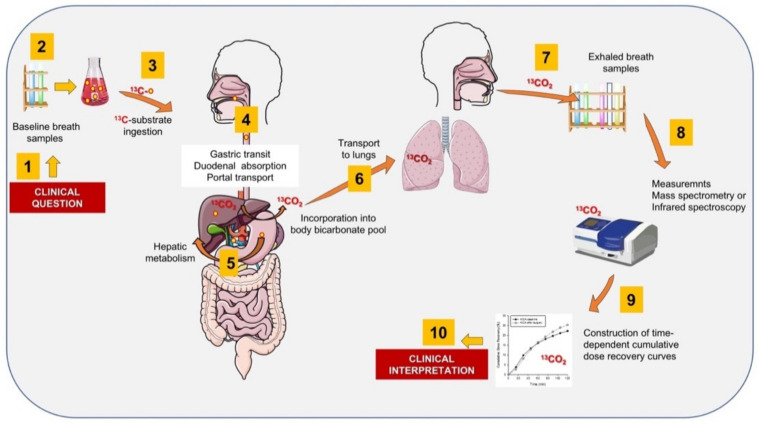Figure 4.
The ten-step protocol for the breath analysis using 13C-substrates for the study of liver function. Starting from the clinical question (1), the fasting subject collects breath samples (2), and, after ingestion of the solution containing the substrate (3), further steps include gastric emptying, duodenal absorption, and portal transfer to the liver (4). The substrate undergoes metabolization at different levels (i.e., microsomes, cytosol, and mitochondria) with production of 13CO2 (5). Afterwards, 13CO2 undergoes incorporation into the bicarbonate pool and quick transport to the lung (6) where appears in exhaled air ready for collection (7). Breath samples are measured by infrared spectroscopy or mass spectrometry (8) with software constructing time-dependent curves of the metabolic process (9). The information serves to elaborate the specific clinical interpretation of liver function (10). An important assumption is that gastric emptying is not severely delayed and that the lung function is not severely impaired [96,143,145,158]. Cartoon adapted from Di Ciaula et al., Eur. J. Internal Medicine 2021 [39].

